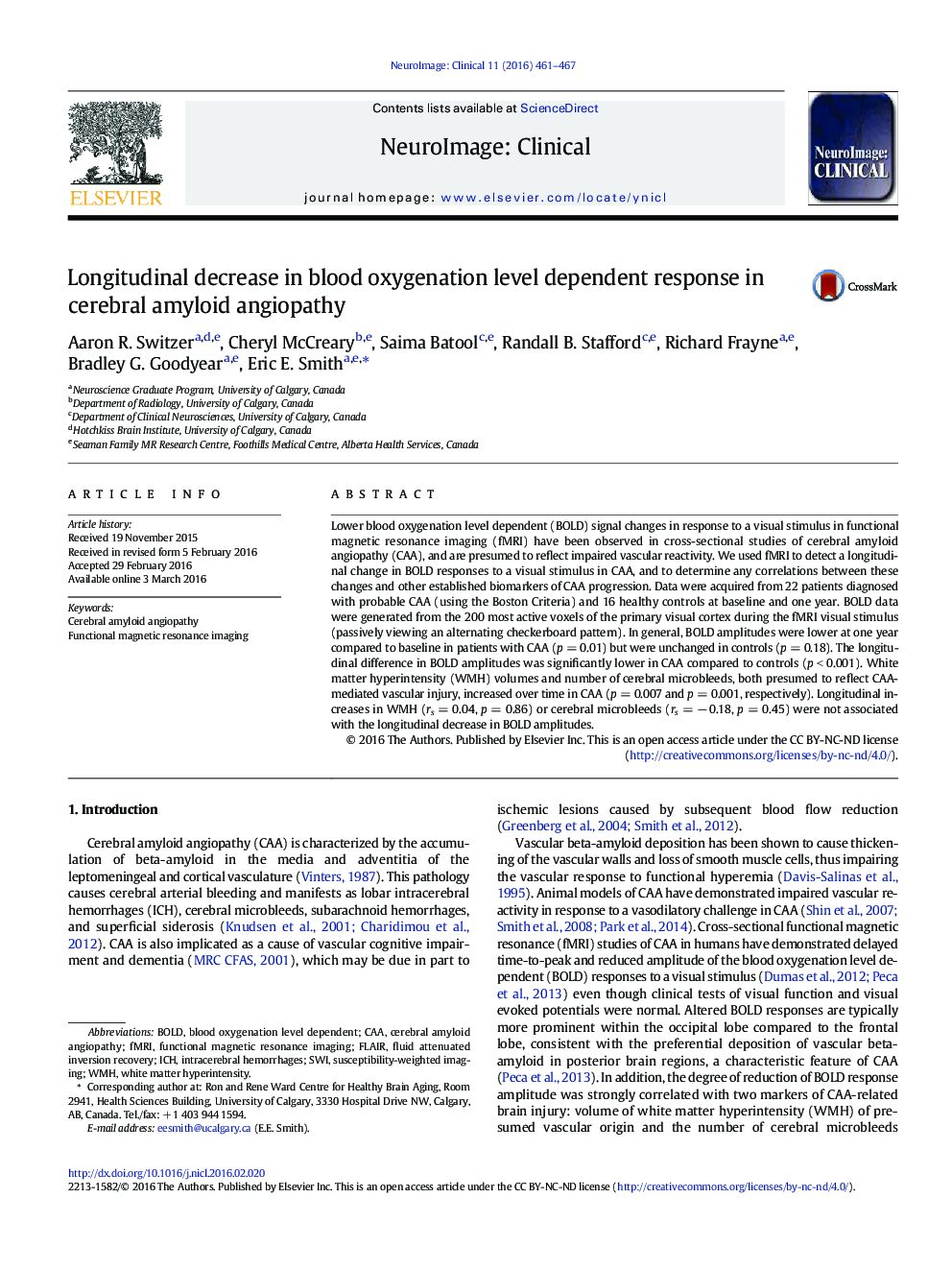| Article ID | Journal | Published Year | Pages | File Type |
|---|---|---|---|---|
| 3074937 | NeuroImage: Clinical | 2016 | 7 Pages |
•Visual fMRI was performed in CAA and controls at baseline and at one year.•BOLD response amplitude was lower at one year compared to baseline in CAA.•BOLD response amplitude decreases were not seen in similarly-aged controls.•Progressive impairment in vascular reactivity may be a feature of CAA.•Decreased BOLD response amplitude was unrelated to other CAA-related vascular changes.
Lower blood oxygenation level dependent (BOLD) signal changes in response to a visual stimulus in functional magnetic resonance imaging (fMRI) have been observed in cross-sectional studies of cerebral amyloid angiopathy (CAA), and are presumed to reflect impaired vascular reactivity. We used fMRI to detect a longitudinal change in BOLD responses to a visual stimulus in CAA, and to determine any correlations between these changes and other established biomarkers of CAA progression. Data were acquired from 22 patients diagnosed with probable CAA (using the Boston Criteria) and 16 healthy controls at baseline and one year. BOLD data were generated from the 200 most active voxels of the primary visual cortex during the fMRI visual stimulus (passively viewing an alternating checkerboard pattern). In general, BOLD amplitudes were lower at one year compared to baseline in patients with CAA (p = 0.01) but were unchanged in controls (p = 0.18). The longitudinal difference in BOLD amplitudes was significantly lower in CAA compared to controls (p < 0.001). White matter hyperintensity (WMH) volumes and number of cerebral microbleeds, both presumed to reflect CAA-mediated vascular injury, increased over time in CAA (p = 0.007 and p = 0.001, respectively). Longitudinal increases in WMH (rs = 0.04, p = 0.86) or cerebral microbleeds (rs = − 0.18, p = 0.45) were not associated with the longitudinal decrease in BOLD amplitudes.
